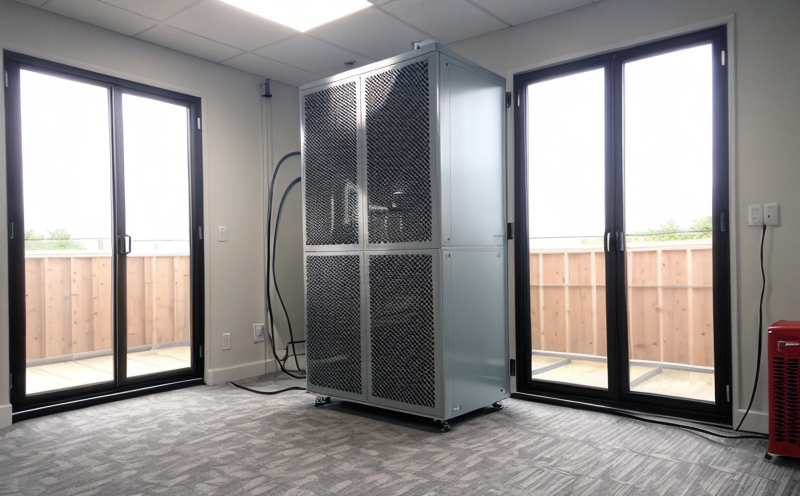DIN EN 13053 Air Handling Unit Flow Verification
The DIN EN 13053 standard is designed to ensure that air handling units (AHUs) meet the required performance levels regarding airflow and ventilation. This test is critical for ensuring that HVAC systems in buildings are functioning optimally, thereby contributing to occupant comfort and energy efficiency.
During this verification process, AHUs undergo a series of tests to confirm that they deliver the specified air flow rates as stated by the manufacturer. The testing method involves measuring the actual airflow through the unit under specific conditions set out in the standard. This includes ensuring that fans operate within their design parameters and that any filters or other components do not impede airflow.
Before conducting the tests, it is essential to prepare the AHU according to the requirements specified by DIN EN 13053. This involves ensuring that all connections are secure, that the unit is clean inside and out, and that any auxiliary systems (such as dampers or heating elements) are in place. Once prepared, the AHU can be connected to a flow measurement system which will record the airflow rates.
The testing process typically involves multiple steps. First, the static pressure of the unit is measured both upstream and downstream of the fan. This provides an initial baseline for comparison after the test. Next, the fan speed is adjusted according to manufacturer specifications while continuously monitoring the airflow rate using high-precision instruments.
After achieving stable operation at various fan speeds, additional measurements are taken including static pressure differences across filters and other components within the AHU. These readings help determine whether there has been any degradation in performance due to dirt accumulation or other factors over time. Finally, the test concludes by verifying that all safety limits and operational parameters remain within acceptable ranges.
| Industry Sector | Specific Application |
|---|---|
| Hospitality | Ensuring proper ventilation in hotel rooms and public areas. |
| Healthcare | Verifying the safety of air quality for patient recovery. |
| Data Centers | Maintaining optimal conditions for server operation and cooling efficiency. |
| Schools & Universities | Providing safe, comfortable learning environments. |
Benefits of DIN EN 13053 Air Handling Unit Flow Verification
The benefits of conducting this test are numerous and significant. For quality managers, it ensures that the HVAC system operates as intended, which enhances overall building performance. Compliance officers benefit from knowing they meet regulatory requirements necessary for maintaining operational standards.
R&D engineers gain valuable insights into how different components affect airflow dynamics within AHUs. This information can then be used to improve future designs or troubleshoot existing issues more effectively. For procurement teams, ensuring that all equipment meets the stringent specifications outlined by DIN EN 13053 helps avoid costly replacements and ensures longevity of investment.
- Reduces energy consumption by optimizing air flow through AHUs.
- Improves indoor air quality by preventing contamination from poorly ventilated spaces.
- Prolongs the lifespan of HVAC systems by identifying potential problems early on.
- Achieves regulatory compliance which is crucial for avoiding penalties and fines.
Environmental and Sustainability Contributions
The DIN EN 13053 Air Handling Unit Flow Verification plays a crucial role in promoting environmental sustainability. By ensuring that AHUs operate efficiently, less energy is consumed, translating directly into lower carbon emissions.
- Reduces greenhouse gas emissions by optimizing HVAC performance.
- Promotes resource conservation through efficient use of electricity and other utilities.
- Encourages the design of more sustainable buildings that prioritize energy efficiency from inception.
- Supports global efforts towards reducing carbon footprints associated with commercial buildings and industrial facilities.





